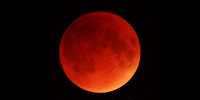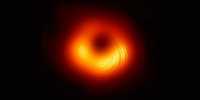On January 18, the stony asteroid (7482) 1994 PC1 will pass safely by Earth. Given its size of roughly 1 kilometer (0.6 miles) and proximity to our planet, the object is classified as potentially dangerous, however there is currently no known danger. The asteroid will be 1.98 million kilometers (1.23 million miles) from Earth tonight at its closest point, which is more than five times the distance between Earth and the Moon. Its close passing has fewer than 150 kilometers of uncertainty (93 miles). For the next 172 years, this is the closest it will get to us. We have nothing to be concerned.
This flyby is a fantastic opportunity for astronomers to study asteroids since it gives them a chance to learn more about this object and its class. It also aids in the refinement of our orbital computations of such objects, allowing us better predict future close passes. The next near approach under 5 million kilometers (3 million miles) will take place on January 18, 2105, while the one after that will take place on January 20, 2194. Both of these flybys will be farther apart than the one scheduled for tonight.
Despite its size and proximity, the asteroid is not particularly brilliant, with a maximum brightness of 10. So it is not something you can see with just your eyes or binoculars; you will need a powerful telescope to see it. If you do not have one or the weather is not cooperating where you are, the Virtual Telescope crew will broadcast it live on their channels later tonight at 19:30 ET (22:30 UTC).
The Potentially Hazardous Asteroid (7482) 1994 PC1 will pass close but safely by us on January 18, 2022, at a distance of around 2 million kilometers. The Virtual Telescope Project will stream it live, so you can see it from the comfort of your own home! The potentially dangerous asteroid (7482) 1994 PC1 has an estimated diameter of 750–1350 meters (source: Nasa/JPL): this will make it brilliant before the fly-by, making it observable with modest instruments, primarily from the Southern hemisphere.
The Virtual Telescope Project will broadcast it live, online, just at the fly-by time, when its brightness will peak and it will be well placed in the Northern Hemisphere sky. You can participate in the tour from the comfort of your own home this way. Opportunity will present itself when people are watching “Don’t Look Up”!
















